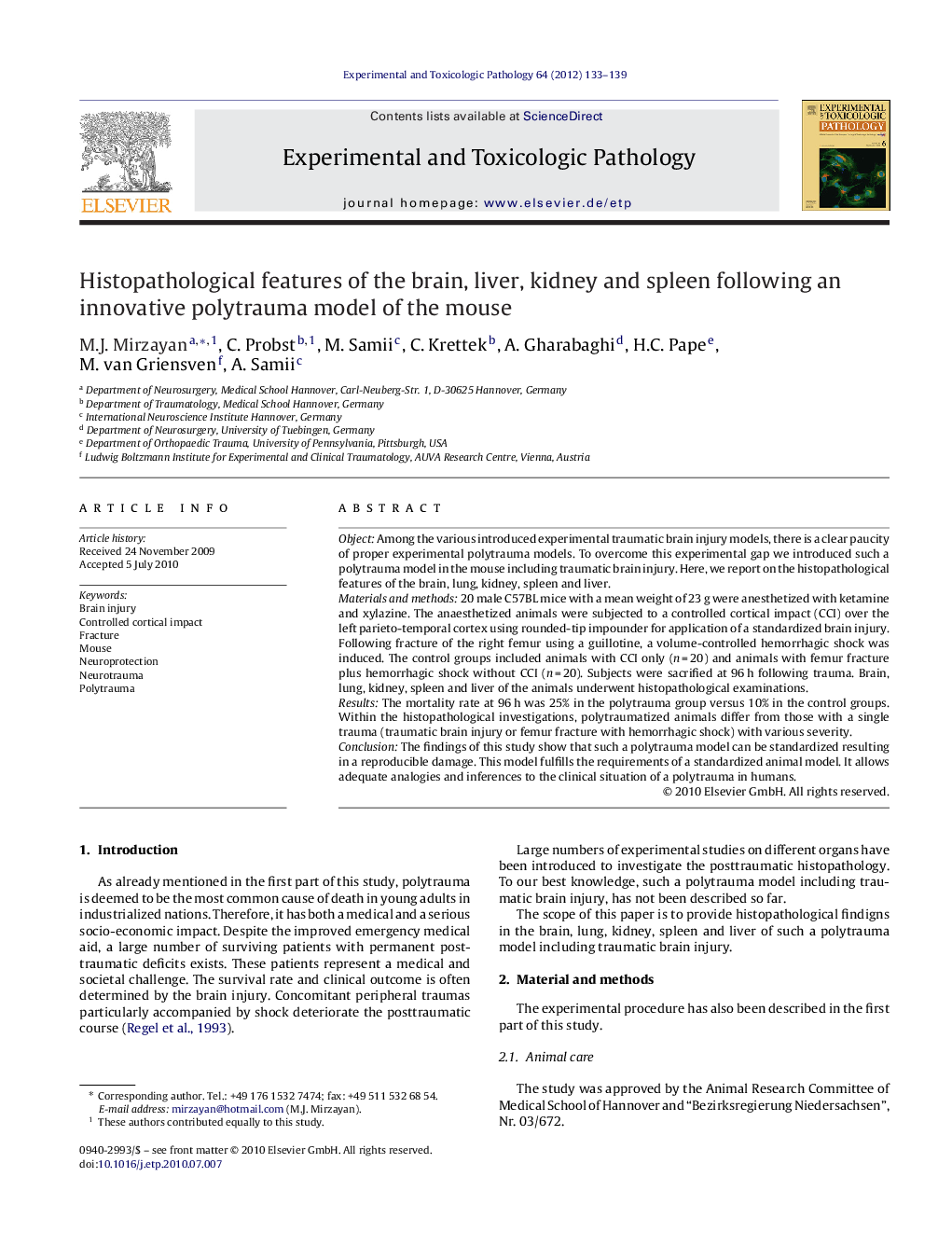| Article ID | Journal | Published Year | Pages | File Type |
|---|---|---|---|---|
| 2499188 | Experimental and Toxicologic Pathology | 2012 | 7 Pages |
ObjectAmong the various introduced experimental traumatic brain injury models, there is a clear paucity of proper experimental polytrauma models. To overcome this experimental gap we introduced such a polytrauma model in the mouse including traumatic brain injury. Here, we report on the histopathological features of the brain, lung, kidney, spleen and liver.Materials and methods20 male C57BL mice with a mean weight of 23 g were anesthetized with ketamine and xylazine. The anaesthetized animals were subjected to a controlled cortical impact (CCI) over the left parieto-temporal cortex using rounded-tip impounder for application of a standardized brain injury. Following fracture of the right femur using a guillotine, a volume-controlled hemorrhagic shock was induced. The control groups included animals with CCI only (n = 20) and animals with femur fracture plus hemorrhagic shock without CCI (n = 20). Subjects were sacrified at 96 h following trauma. Brain, lung, kidney, spleen and liver of the animals underwent histopathological examinations.ResultsThe mortality rate at 96 h was 25% in the polytrauma group versus 10% in the control groups. Within the histopathological investigations, polytraumatized animals differ from those with a single trauma (traumatic brain injury or femur fracture with hemorrhagic shock) with various severity.ConclusionThe findings of this study show that such a polytrauma model can be standardized resulting in a reproducible damage. This model fulfills the requirements of a standardized animal model. It allows adequate analogies and inferences to the clinical situation of a polytrauma in humans.
